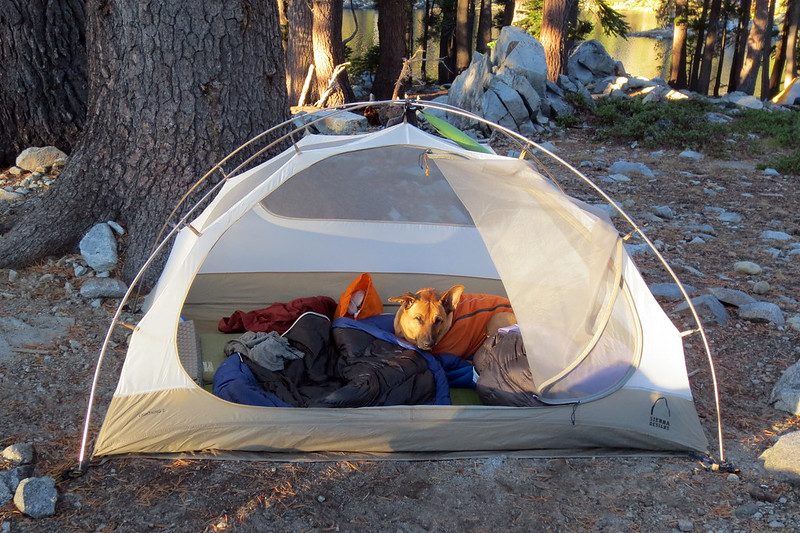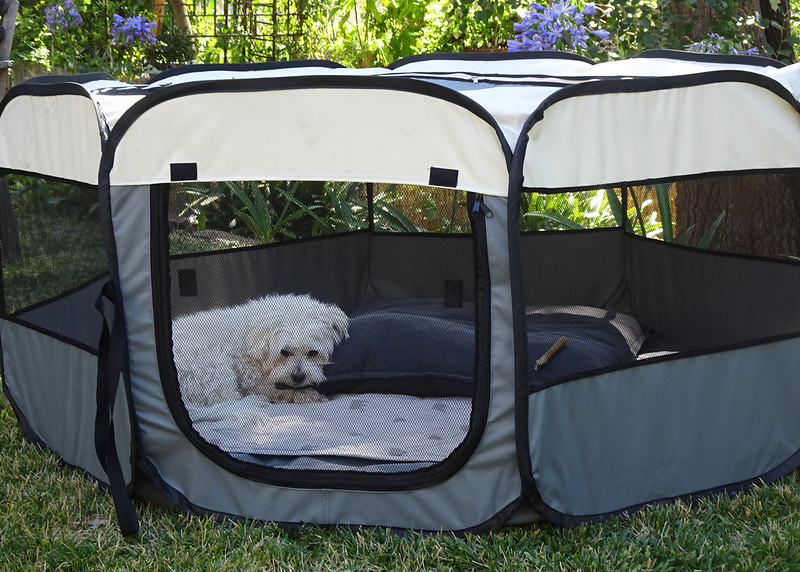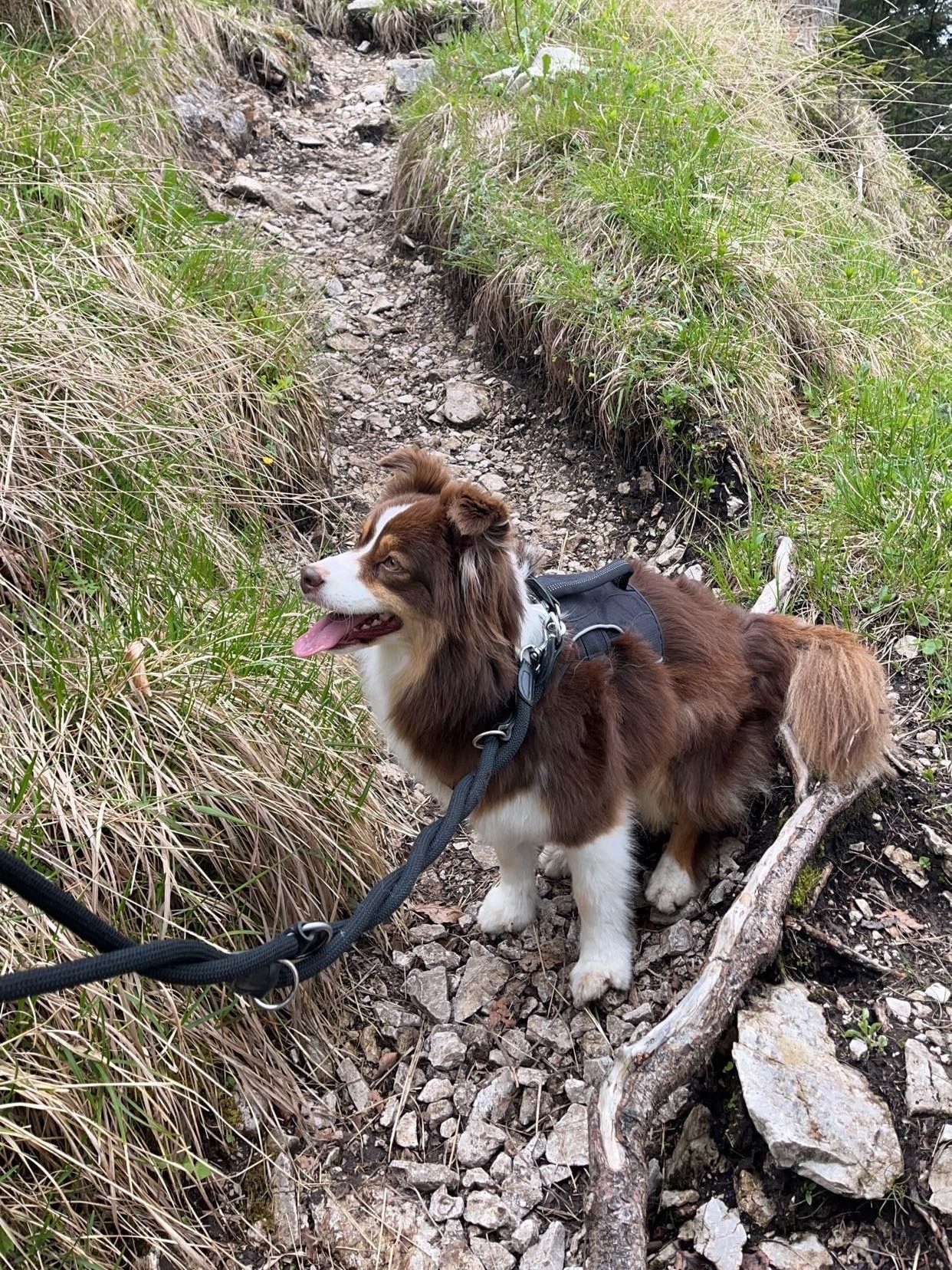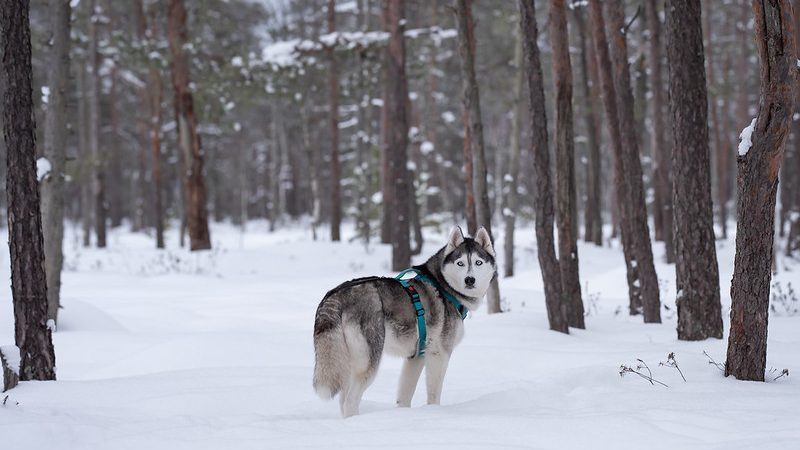Dogs are known to be a human’s best friend. Therefore, it isn’t surprising that dog owners like to take their beloved pets everywhere. People who are interested in (long distance) hiking are likely to bring their dogs with them onto the mountain every now and then when going for a (long distance) hike. However, not all breeds of dogs or kinds of (long distance) trails are fitting for such an undertaking. Each dog owner has to decide on their own whether their little darling is up for a good (long distance) hike or not. If you are sure that your dog likes (long distance) hiking, the actual planning can be started.
I have tried to answer the most important questions about the how far?, where?, what? and when? with this article.
- How long and how far can you hike with a dog?
As mentioned earlier, this depends on what kind of dog you own. Some dogs might not like (long distance) hiking at all whereas others have a lot of energy. I dare to say that it’s easier to go for a long distance hike with a Husky or a Shepherd rather than a Chihuahua or a Jack Russell. The most important thing is to know your own dog and its limits/abilities very well and to give them — as you would do it to yourself as well — enough possiblities for a little rest. Having four paws doesn’t automatically mean having more power!
If deciding to bring your dog to a long distance hike lasting a couple of days, some changes concerning the equipment of the four-legged friend have to be made. Yet, we will come back to this later on!
- Where can you go hiking with your dog?
As important as the question about the length of the trail is its location. There are many hiking routs — especially when doing a long distance hike — which aren’t a good fit when having your dog with you. Some examples for that are the Ak-Suu Transverese in Kirgisistan or the Circuito de Huayahuash in Peru which are both listed in the trail search on the MyTrails website. Other trekking-tours like the Affric Kintail Way in Great Britain or the Eagle Creek Trail in the USA on the opposite give you the permission to bring a dog. The important part is the ground condition as dogs normally don’t wear hiking boots and could get their paws hurt on some soil. To prevent this from happening you should avoid trails with sharp stones, slippery ice, or extremely hot sand.
Another question that comes up when choosing the right (long distance) hiking trail or its perfect length is the one about the dog’s place for the night. Either staying in a cabin at the trail or in your own tent, a spot for your dog needs to be found as well. Without enough sleep during nighttime the furry hiking buddy hasn’t got any energy left for hiking the next day. That is why you need to check with the owner of the accommodation whether dogs are allowed there. In case you are planning to camp, there needs to be an extra tent for the dog, a space for the dog in your tent, or another arrangement. As long as the dog isn’t off-leash, so that they cannot get in trouble with other animals or people, it should be fine. Furthermore, you should keep in mind that you have to bring additional baggage because you will have to bring your pet’s (long distance) hiking gear as well. One solution for this problem could be the dog backpack that is mentioned in the packing list.


- What do I have to take care of and what to bring?
When having decided the length and the location of the trekking-tour with your dog, it’s time to pack your stuff. In general, your equipment depends on how far and where you are going to hike with your dog. The packing-manager which has being programmed by MyTrails provides you climate data to each individual trail. This makes the whole packing part much easier. Besides all the obvious objects like water, dog food and bags for the poop (as you don’t want to leave an unwanted/unpleasant surprise for the following long distance hikers) there are some more extraordinary things like toys and a blanket. Some parts of the packing list might not considered necessary by everyone, other items have to be adjusted to the (long distance) trail in quantity. Here is a list with recommendations:
- Water (has to be sufficient for the length of the trail if there is no source for drinking water available for the dog)
- Dog food/goodies (bring enough for the duration of the whole trekking-tour)
- Bags for the poop
- maybe hiking boots (depends on the trail and the sensibility of your dog’s paws)
- blanket (dependent on the temperature on the long distance trail)
- Dog bed/tent (depends on whether you plan to sleep in a tent or in a cabin)
- Toys (dogs need a fun variety in opposite to the exhausting hiking)
- Collar/harness and leash (+ spare leash)



Concerning the last items on the list, there are two questions coming ahead: “Which leash should be used when hiking with your dog?“ and “Is it better to use a collar or a harness?“ In order to have better control over your four-legged buddy, no matter what breed it is, the harness is the right thing to use. Not only the owner is able to restrain the dog much easier, but rather the dog itself doesn’t get strangled by the collar around the neck. Additionally, using a harness with integrated dog backpack, you can give part of the luggage to your little hiking buddy as long as they have enough energy to carry this weight. Regarding the leash it is recommended not to use a towing line since it’s not very practical for (long distance) hiking. It is too long and can easily get stuck on trees, branches, stones, or something similar along the hiking trail. To grant your dog still a some freedom, you can use a free-handed, compact one with shock-absorbing bungee and girdle.
- When is the best time to go hiking with your dog?
The season itself doesn’t play the most important role when trying to decide whether to do a long distance hike with you dog or not. With some dogs, it’s possible to hike on snow as well as on an extremely dry ground. However, the equipment has to be adjusted to the climate conditions. For example, for hot temperatures it’s necessary to bring more water whereas for snow you need to pack protection against the cold.

So, you may have noticed that a good planning is indispensable when doing a (long distance) hike with your dog. Nevertheless, there should be time for having fun as well!


